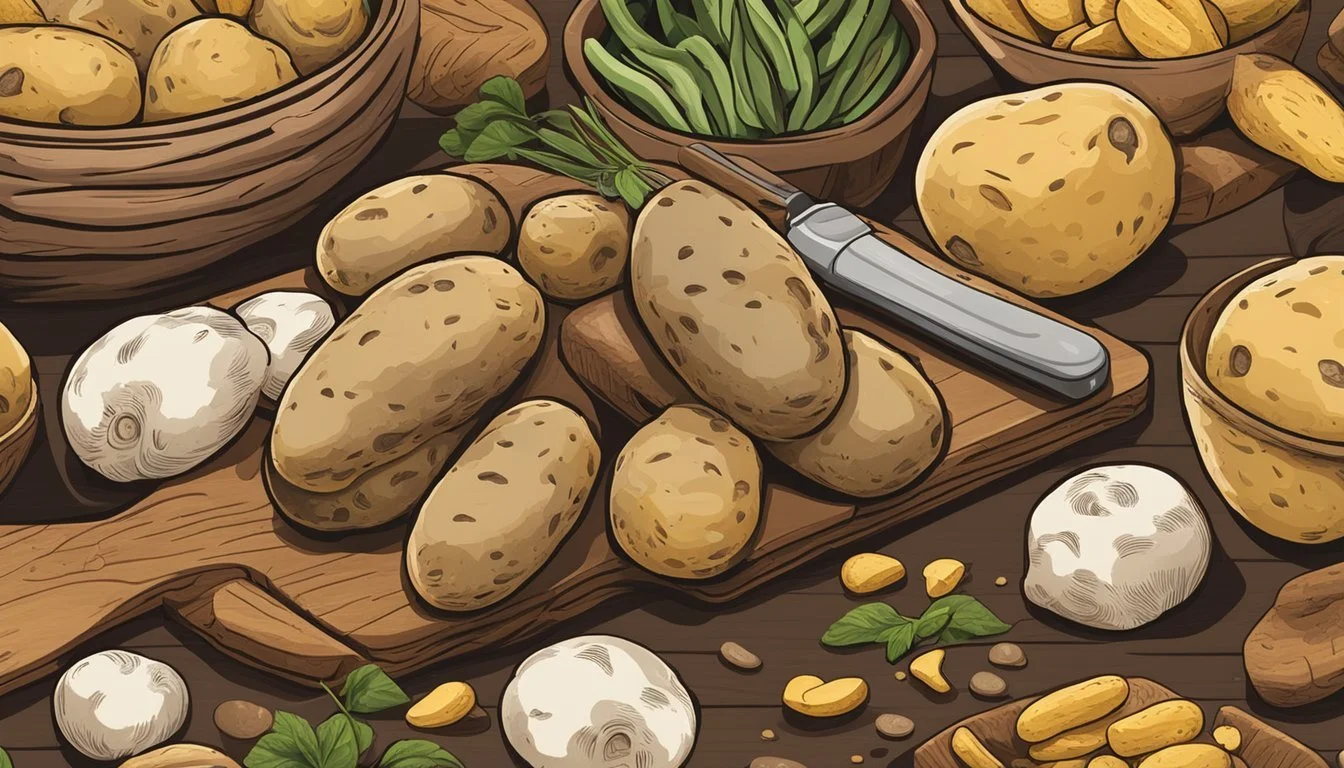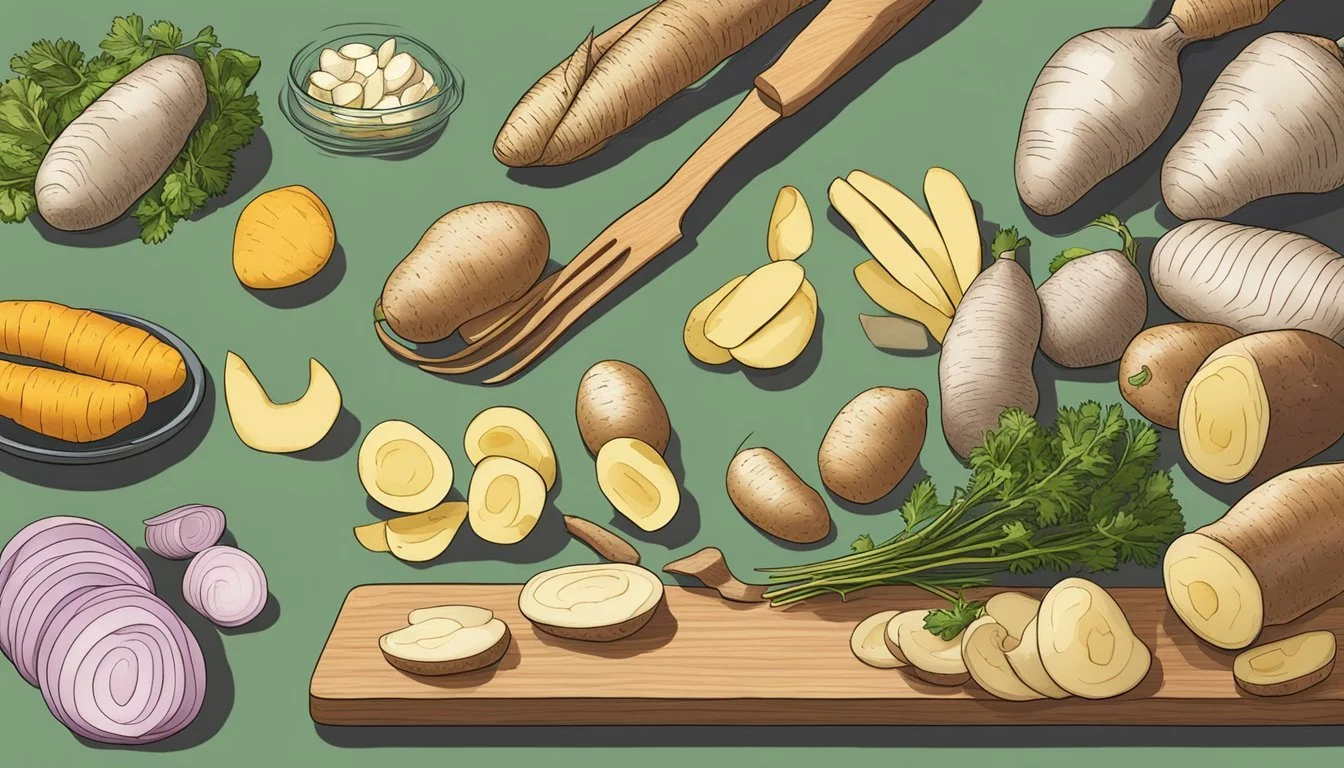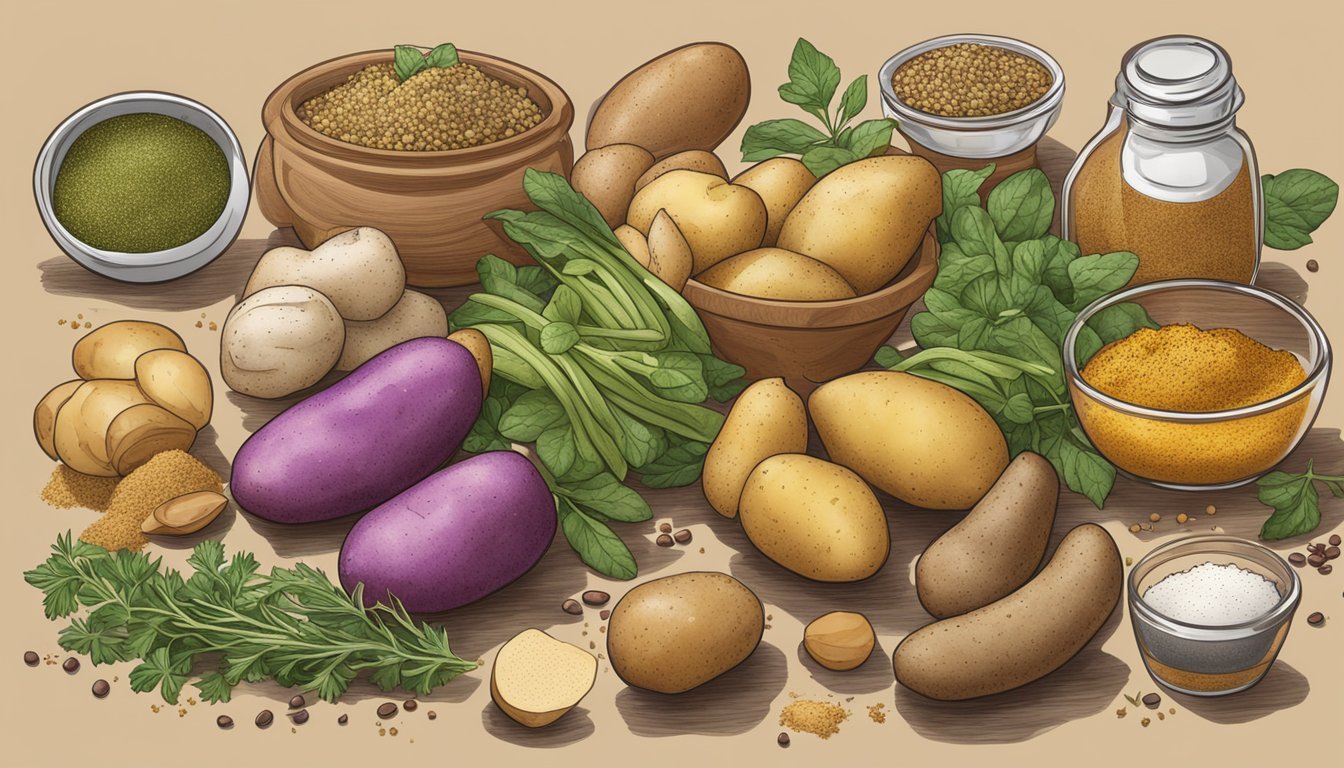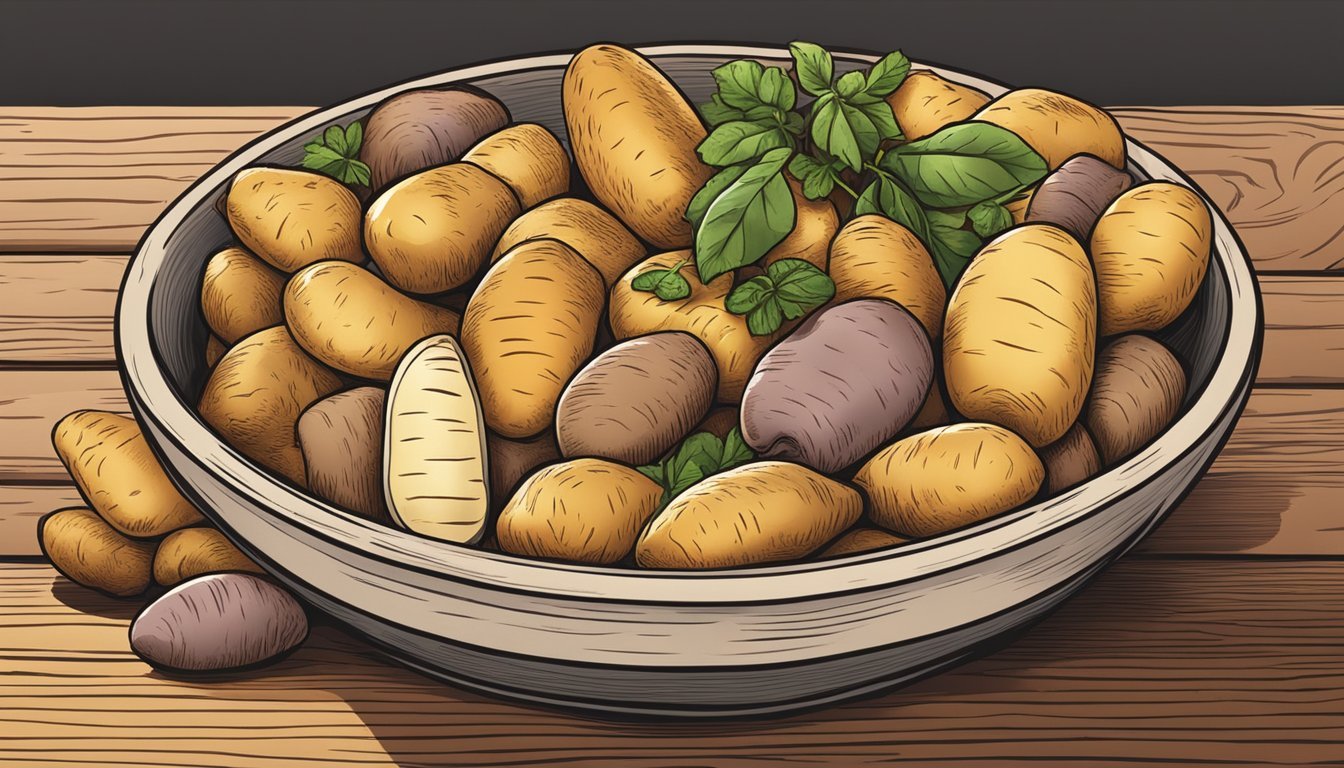Fingerling Potatoes Substitutes
Top Alternatives for Recipes
For everyone searching to find the perfect substitute for fingerling potatoes, exploring a variety of alternatives can elevate your culinary game. Fingerling potatoes, known for their small, elongated shape and unique flavors, can be replaced effectively in many recipes that call for their distinct texture. Yukon Gold potatoes are a top candidate as they offer a creamy flesh and versatile cooking capabilities whether roasted, boiled, or mashed.
In addition to Yukon Gold potatoes, sweet potatoes bring a different but delicious profile to the table. Their robust flavor and firm texture stand out in both sweet and savory dishes. Red potatoes and new potatoes can also serve as excellent substitutes, offering a similar texture and cooking flexibility that fingerling potatoes are known for.
For those wanting to experiment further, baby potatoes present another option. Similar in size and versatility, they can mimic the appearance and taste of fingerling potatoes in most recipes. With these substitutes, there's no need to halt your favorite recipes if fingerling potatoes are unavailable.
Understanding Fingerling Potatoes
Fingerling potatoes are small, finger-shaped tubers known for their low starch content and unique texture. They are versatile in culinary uses and offer a modest nutritional profile, including fiber, potassium, and Vitamin C.
Characteristics of Fingerling Potatoes
Fingerling potatoes are aptly named for their elongated, finger-like shape. These tubers come in various skin and flesh colors, including yellow, red, and purple. Their texture is generally firm and waxy, making them ideal for dishes that require the potatoes to hold their shape, such as roasts and salads. Due to their low starch content, they don't break down easily during cooking. Cultivation typically requires cool weather, direct sunlight, and moist, fertilized soil. They are harvested once the vines die out, affirming their readiness for consumption.
Culinary Uses
In the kitchen, fingerling potatoes shine in several applications. Their firm texture makes them perfect for roasting, delivering a crispy exterior while maintaining a creamy interior. They are also popular in potato salads, providing a pleasing bite without becoming mushy. Other common preparations include boiling, grilling, and even baking. Their diverse color palette can add visual appeal to any dish. Fingerling potatoes can be the star ingredient or a robust side dish, pairing well with meats, vegetables, and herbs.
Nutritional Profile
Fingerling potatoes offer a range of nutrients beneficial to a balanced diet. A 100-gram serving contains:
1.8 grams of fiber
Potassium: Supports heart and muscle function.
Vitamin C: Essential for immune health and skin integrity.
Iron: Aids in oxygen transport in the blood.
Protein: Though not high, still a valuable component.
They are particularly noted for having higher levels of antioxidants, especially those with colored skin and flesh. Additionally, they have modest amounts of calcium and iron, contributing to overall nutrient intake without being a primary source.
By understanding these key aspects, one can fully appreciate the unique qualities and benefits that fingerling potatoes bring to both everyday and gourmet culinary experiences.
Selecting Substitutes for Fingerling Potatoes
When selecting substitutes for fingerling potatoes, consider both texture and flavor to ensure your dish meets your expectations. Several potato varieties provide excellent alternatives, offering a mix of waxy textures and buttery flavors.
Factors to Consider
Choosing the right substitute depends on several factors. First, consider the texture. Fingerling potatoes are known for their waxy consistency, which holds up well during roasting and boiling. A substitute should ideally share this trait to maintain the structure of your dish.
Next is flavor. Fingerlings have a natural, buttery taste, so pick options that offer a similar profile. Additionally, the size and shape of the potatoes can impact cooking time and presentation. Smaller potatoes are generally preferable to mimic fingerlings.
Best Substitute Options
New Potatoes: These immature potatoes are a great stand-in. They have a similar size and waxy texture, making them perfect for salads and roasting.
Baby Potatoes: Often sold as a mixture of small potato types, these can be seasoned easily and maintain a firm texture. They work well in a variety of recipes.
Yukon Gold Potatoes: Known for their buttery flavor, Yukon Golds offer a slightly different texture but are versatile for roasting and boiling. They can mimic the rich taste of fingerlings.
Red Bliss Potatoes: These are another superb option, with their low-starch, waxy nature. Red Bliss potatoes hold their shape well and have a slightly sweet flavor, making them suitable for most recipes that require fingerling potatoes.
Preparation Techniques for Potato Substitutes
Different potato substitutes each bring their unique flavors and textures, requiring tailored preparation methods to maximize their potential. Key techniques include roasting, boiling, steaming, grilling, and sautéing, each enhancing specific attributes of these alternatives.
Roasting Alternatives
Roasting enhances the flavors of many potato substitutes, creating crispy exteriors with tender interiors. Yukon Gold potatoes and sweet potatoes are excellent for roasting due to their creamy textures. To prepare, cut the substitutes into uniform pieces to ensure even cooking. Preheat the oven to 400°F and toss the pieces with olive oil, salt, and herbs like rosemary and thyme. Spread them on a baking sheet in a single layer and roast for about 25-30 minutes, turning halfway until golden brown.
Another option is turnips, which gain a mild sweetness when roasted. Prepare turnips similarly, but they may require slightly less cooking time, around 20-25 minutes. To add a robust flavor, include minced garlic or a sprinkle of smoked paprika to the seasoning mix.
Boiling and Steaming Variants
Boiling and steaming are ideal for making mashed potato alternatives or preparing ingredients for salads. Daikon radish and carrots are top substitutes here. Peel and cut the daikon into similar-sized chunks to ensure even cooking. Boil in salted water for about 10-15 minutes until tender. For mashed daikon, drain and mash with butter, salt, and pepper.
Carrots deliver a sweeter flavor. Boil peeled and chopped carrots for about 15 minutes or steam for a slightly firmer texture. Once tender, carrots can be mashed or added to potato salads. A honey and mustard dressing enhances their sweetness, creating a unique salad component.
Grilling and Sautéing Methods
Grilling and sautéing bring out the deep flavors of many substitutes. Kohlrabi and turnips can transform well on the grill. Slice them into thick rounds, toss with olive oil, salt, and a touch of cumin. Grill over medium heat for 5-7 minutes per side until charred and tender.
For sautéing, summer squash works well. Slice squash thinly and sauté in olive oil over medium-high heat, seasoned with garlic and fresh herbs like basil. Cook for about 5 minutes, stirring frequently, until the squash is tender but still retains some bite. This method also applies to making quick and flavorful side dishes.
These techniques ensure optimal flavor and texture, transforming potato substitutes into delicious components of any meal.
Seasoning Blends and Enhancements
Enhancing fingerling potato substitutes with the right seasoning can elevate their flavor profiles. Key components include herbs, spices, oils, fats, aromatic vegetables, and nuts.
Herbs and Spices
Herbs such as parsley, thyme, and rosemary can provide a fresh and aromatic touch to potato substitutes.
Spices like black pepper, paprika, and garlic powder add depth without overwhelming the primary flavors.
For a nutty flavor, incorporating cumin or coriander can be beneficial.
The combination of salt and pepper is essential for enhancing the natural taste of the potatoes.
Oils and Fats
Oils and fats play a crucial role in achieving the desired texture and richness.
For a buttery taste, consider using avocado oil or extra-virgin olive oil.
Butter can enhance the rich taste, while duck fat provides a unique depth of flavor.
Choosing the right oil or fat impacts the final crispy or saucy texture of the dish.
Aromatic Vegetables and Nuts
Incorporating aromatic vegetables like garlic and onion boosts the savory profile of potato substitutes.
Garlic cloves, when roasted or minced, can add a strong, pungent taste.
Chopped onions or shallots offer a mild sweetness and complexity.
Adding nuts such as crushed walnuts or pine nuts can enhance the crunchy texture and provide a nutty finish.
Combining these elements with the fingerling potato substitutes creates a robust and well-rounded dish.
Side Dish Recommendations
Pairing your fingerling potatoes substitutes with complementary vegetables, proteins, and creative salads can elevate your meal. This section covers ideal pairing options to enhance flavor and variety.
Complementary Vegetables
Roasted baby potatoes pair beautifully with green beans. The crisp snappiness of the green beans contrasts nicely with the soft, roasted texture of the potatoes. Carrots, asparagus, and brussels sprouts are also excellent choices.
Green Beans: Blanch and toss with olive oil and lemon zest.
Carrots: Roast with honey and thyme.
Asparagus: Sauté with garlic and a touch of balsamic vinegar.
Brussels Sprouts: Halve and roast until crispy.
Protein Pairings
Adding a protein to your potato side dish creates a more balanced meal.
Chicken: Grilled or baked, seasoned with herbs.
Steak: Perfectly complements the robust flavor of roasted fingerling potatoes.
Salmon: Offers a lighter option, especially when grilled and drizzled with lime.
Tofu: For a vegetarian option, marinate and bake for enhanced texture.
These proteins, when prepared correctly, add depth and balance.
Creative Salads and Entrees
Incorporate your potato substitutes into salads and entrees for an innovative twist.
Potato Salad: Mix roasted baby potatoes with a mustard vinaigrette, chopped herbs, and capers.
Entrée Salads: Add roasted potatoes to a bed of arugula, cherry tomatoes, and goat cheese.
Warm Salads: Combine with roasted vegetables, spinach, and a light dressing.
Buddha Bowls: Include roasted potatoes with quinoa, avocado, and a tahini drizzle.
These combinations offer fresh, satisfying meal options.
By integrating these vegetables, proteins, and creative salads, you can craft diverse and flavorful side dishes to complement your main course. Each suggestion emphasizes balance and versatility to enhance the overall dining experience.
Varieties of Potatoes as Substitutes
Exploring alternative potatoes can enhance your dishes with different textures and flavors. Here are some key substitutes for fingerling potatoes categorized by waxy and starchy types.
Waxy and All-Purpose Varieties
Waxy potatoes maintain their shape well during cooking, making them perfect for dishes like salads and roasts. New potatoes or baby potatoes are excellent fingerling substitutes due to their similar size and waxy texture.
Russian Banana fingerlings have a similar texture but slightly sweeter taste. Red potatoes, such as Red Bliss, provide a firm texture ideal for roasting or boiling. Dutch Cream potatoes and Yellow Flesh varieties, including Yukon Gold and Carola, deliver a creamy texture without falling apart easily, offering versatility in many recipes.
Purple Peruvian potatoes add both visual appeal and a nutty flavor. These varieties ensure that the texture and flavor profiles remain comparable to fingerlings, enhancing your culinary options without compromising dish integrity.
Starchy Potato Alternatives
Starchy potatoes are ideal for baking and frying due to their fluffy interior. Russet potatoes, often referred to as Idaho or Burbank, are a popular alternative when fingerling potatoes are unavailable. Their light and fluffy flesh makes them suitable for mashing or baking.
Sweet potatoes provide a unique sweet flavor and can be used in both savory and sweet dishes. For a more classic potato flavor, Maris Piper or Katahdin potatoes are excellent choices. These types offer the starchy consistency needed for mashed potatoes and fries.
Inca Gold potatoes provide a rich, buttery flavor and fluffy texture, making them another suitable substitute. Using starchy potatoes lets cooks experiment with different textures and flavors while maintaining the desired cooking results.
Sourcing and Storage
Widespread availability and proper storage of potato substitutes are crucial for maintaining their quality and flavor over time. This section elaborates on where to buy popular potato substitutes and how to store them effectively at home.
Where to Buy Potato Substitutes
Potato substitutes such as Yukon Gold and sweet potatoes can be found in various locations. Local grocery stores, farmers' markets, and online retailers are excellent sources.
When choosing these substitutes, select firm, unblemished specimens. Ensure they are free of sprouts and bruises, which indicate age and improper storage.
Storage Tips
To keep substitutes fresh, store them in a cool, dark, and well-ventilated area. Avoid refrigeration, as it can alter their texture and flavor. Instead, place them in a pantry or cellar, ideally around 50˚F with moderate humidity. Maintaining these conditions helps prevent spoilage and extends their shelf life.







